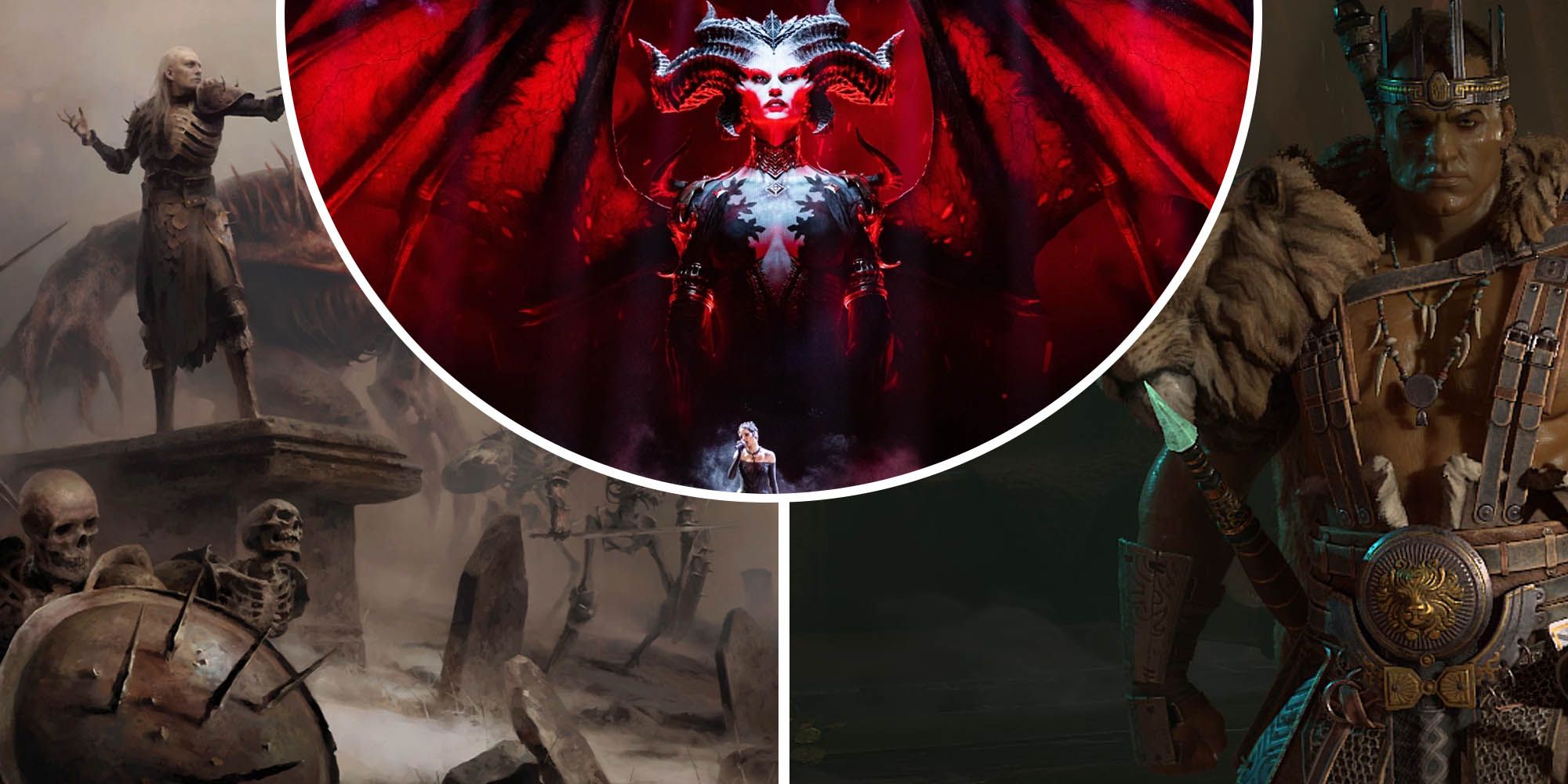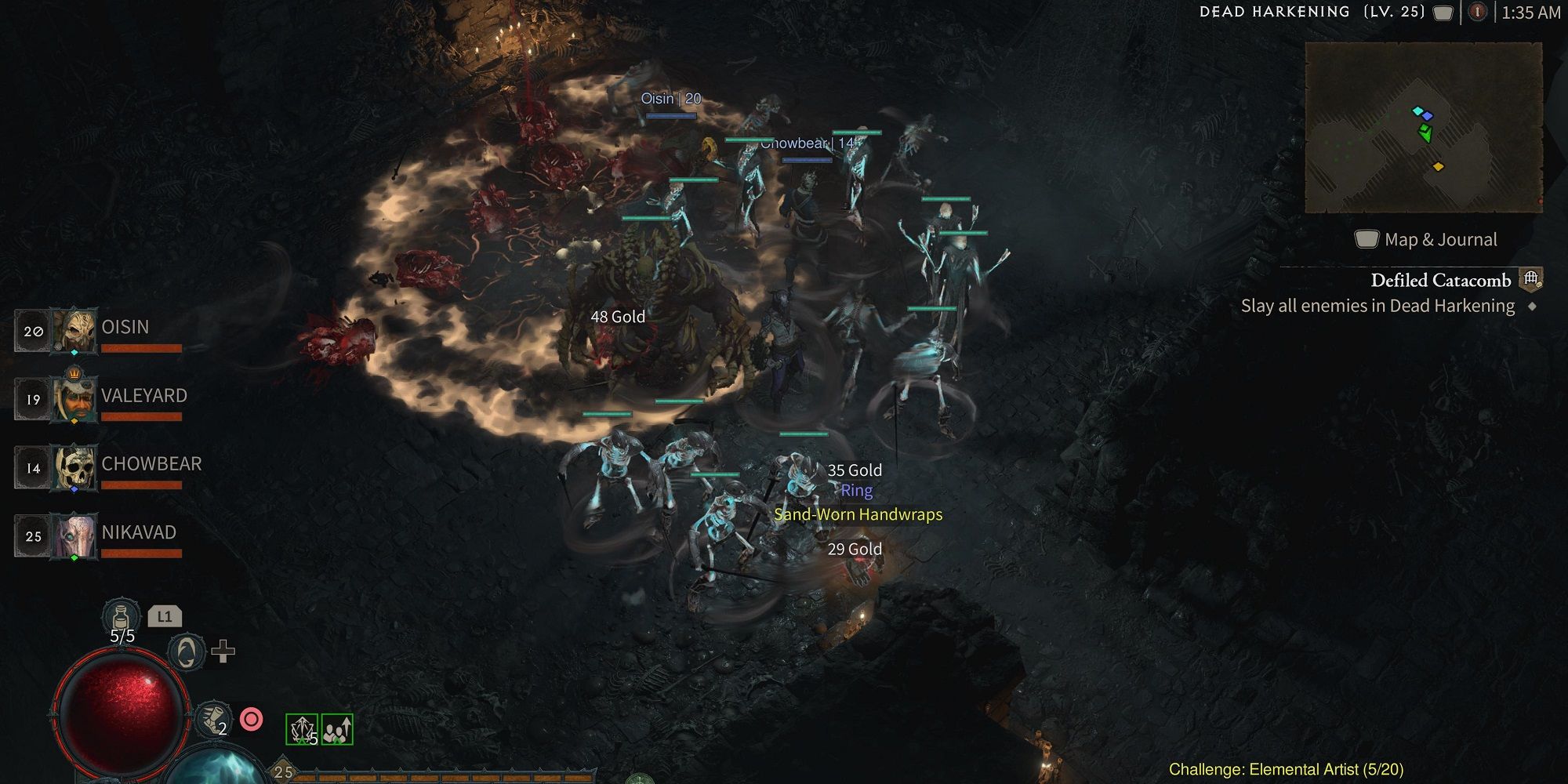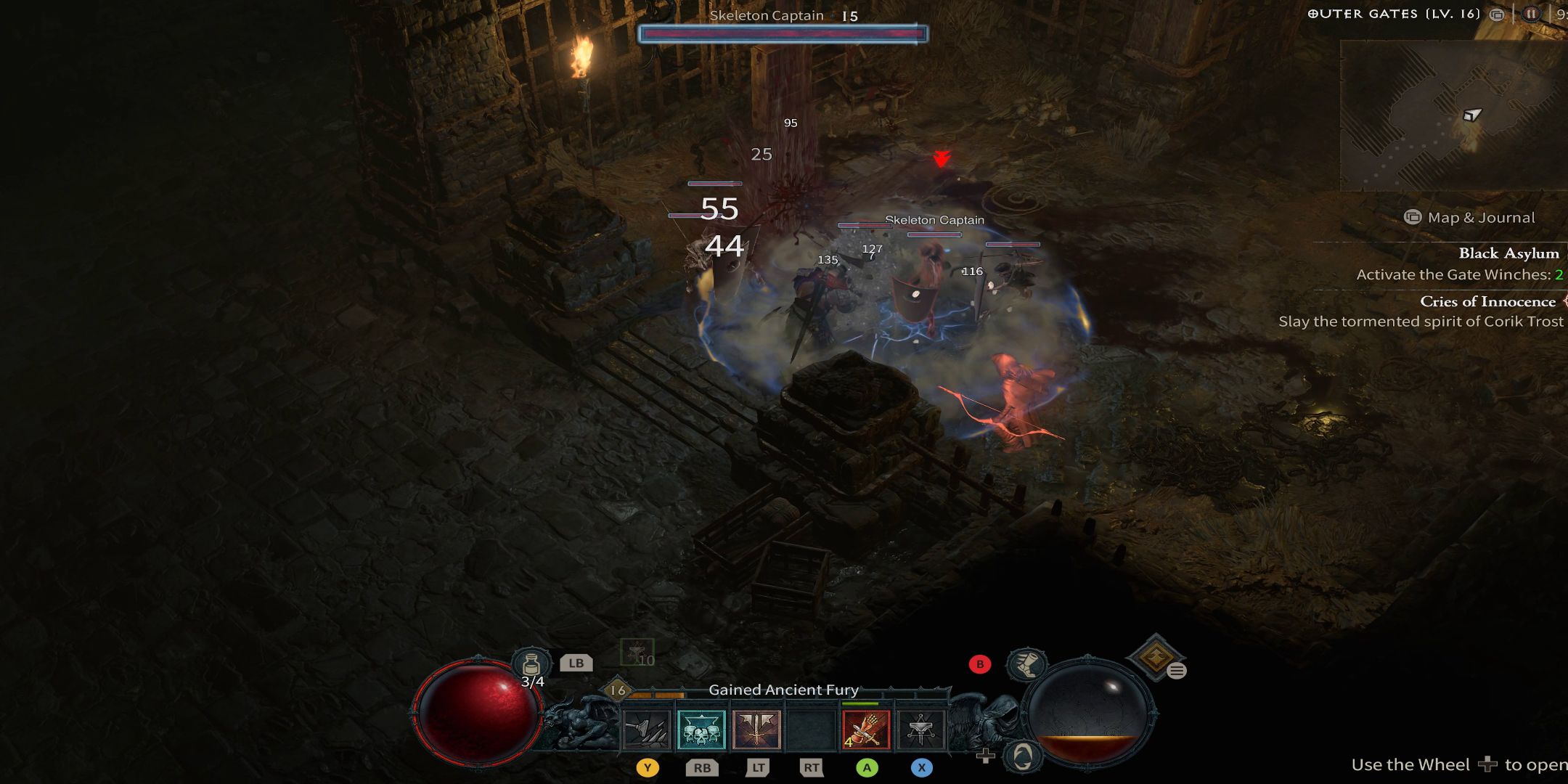Remember when ARPGs used to be somewhat challenging, and wouldn’t lock away their higher difficulties behind dozens of hours of grinding and extra difficulty tiers connected to either your Level or completing the game multiple times? These days, pointing out that an ARPG like Diablo 4 is too easy will lead to snotty replies like ‘Heh, just you wait until Torment XXVII Ultra-Veteran Nightmare Tier X. Then you’ll see.’ Well, no, I won’t, because if a game like this doesn’t give me a satisfying challenge curve then I’m going to check out way before that. There's a whole spectrum of difficulty between what you're offered at the start if Diablo, and the hardcore meta stuff of the distant endgame, yet recent outings of Diablo haven't been able to engage with it properly.
What’s bizarre is that outside if Diablo and the cult of Diablo-like ARPGs in its wake–be it Grim Dawn, Path of Exile, and the like–you don’t usually need to earn the privilege of facing a challenge by playing the game for dozens of hours; the idea of challenge and difficulty curves is built into most games, especially RPGs, but since its third outing in particular, Diablo has replaced that principle with grind.
Diablo 4, in its defence, has a more satisfying level of baseline challenge than Diablo 3 (comparing their respective hardest available starting difficulties), but it feels extremely wonky, for the most part lacking any meaningful friction before suddenly and very occasionally throwing you up against a difficulty wall. At one point in my dozen or so hours with the game, I wandered into some freakish areas (like that Ice Fortress with the big dude chained up by some kind of magic) that were above my level and where I got duly trounced. I died once in one of the game’s vaunted public events (more on that later), and bounced off the final boss in Act 1, Lilith’s Lament, three times before besting him. In Elden Ring, that’d count as a breezy boss encounter, but as Diablo games go, it’s the toughest challenge I’ve had in the first 40 or so hours of playing the game since Uber Mephisto in Diablo 2.
But the difficulty is so weirdly paced. The reasonably lengthy dungeon leading up to Lilith’s Lament was a complete breeze, capping off a couple of hours of pee-easy adventuring preceding it. For the 20ish minutes that my partner and I tore through several layers of dank and undeniably atmospheric dungeon, descending to the oleaginous waters of the Black Lake at the bottom, the journey was so blandly easy that our early excitement and commentary and ‘ooohs’ and ‘arghs’ kind of fizzled out. There was nothing to discuss strategy-wise because whatever the hell we did we’d get through it anyway, and we actually started casually talking about what we’d cook for dinner as we downed yet-another named Wraith or Revenant who sounded like they should be way more important than their swift demise would suggest.
And then, just as we began slipping into a bit of a lull and thinking maybe it’s time to call it a night, BAM we hit Lilith’s Lament and suddenly we’re engaged, evading one-shot attacks, weaving between deadly gore-rollers, and coordinating on ‘tactical deaths’ so that one of us can replenish their potions. The boss fight was a blast, but the difficulty spike after hours of nonexistent challenge just felt jarring. The dungeon had 20 minutes to build us up to the challenge, the game itself had a good bunch of hours to ramp up the difficulty, but it didn’t, instead offering an almost friction-free experience until the bossman, where suddenly you actually need to focus not to get messed up. It was 0-100 (again, the ‘100’ being relative to the already low difficulty of Diablo on the basic settings). I get that I can increase difficulty from Level 50 or whatever it is, but a) that might not be enough, and b) why should I wait that long? Again, that won’t resolve the weird difficulty pacing issues either, it’ll just make the baseline higher.
Other ‘challenges’ in Diablo 4 come with various caveats. I died during one of the public events (which I happened to do solo), for example, and found that I’d get revived close by enough that I could still run into the event to complete it, and the NPC peasant who I was supposed to be protecting would still be standing firm against a legion of undead ghouls. ‘Does this pitchfork-wielding badass even need me?’ I mulled to myself as I re-entered the fray, finished what I’d started, and claimed my frankly undeserved reward.
I get that these public events are designed around the possibility that other people can jump in at any point, so persist even past your death, but Blizzard could easily tweak this so that the event requires at least one player alive in it for it to remain completable. Give me some sense of consequence, some sense of meaning here, dammit!
Again, I’m aware of what Diablo is these days–a relentless grind machine where you don’t really get much out of it beyond mindless catharsis (be it rewards or meaningful challenge) unless you really put in the hours–but it wasn’t always this way, and it doesn’t have to be this way. Last year, I reviewed the PC port of PS2 ARPG Baldur’s Gate: Dark Alliance 2, and while the game is pretty dated (and the port’s not great), I loved how the game had a satisfying challenge curve throughout its campaign. It treated the campaign like a self-contained adventure, accommodating people who aren’t necessarily in this for the endless grind, and I suggested that Diablo could learn from this old-school design–a design Blizzard seemingly abandoned from Diablo 3 onwards.
Obviously, gamers get their dopamine kicks in different ways–some of us get it from overcoming tough challenges, others get it from incrementally increasing numbers provided by endless loot–but these two things don’t need to be mutually exclusive. Why make me grind until Level 50 or complete the game until I get the thrill of persistent and well-paced challenge? Give me the difficulty options from the start, and let me live with the consequences.



